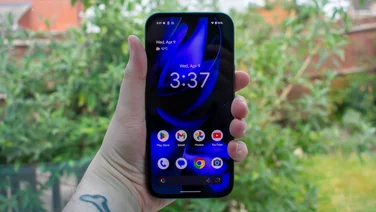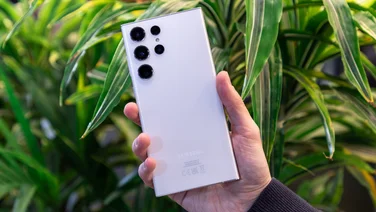To help us provide you with free impartial advice, we may earn a commission if you buy through links on our site. Learn more













- Excellent battery life
- Bright, vibrant 12in display
- Class-leading software support
- Rivals are faster
- Some minor display flaws
The Honor Pad 10 is the latest in a long line of products from the brand that are designed to directly challenge Apple. In this case, we’ve got an affordable tablet that is priced just below the latest 11in iPad (A16, 2025), and aims to offer a comparable experience for Android fans who don’t want to fork out on something like Samsung’s Galaxy Tab S10 FE Plus.
And in that regard, it does a good job – for the most part. An introductory offer lets you get the tablet with a keyboard and stylus for less than half of what you’d pay for the equivalent iPad, the display is nice and bright, battery life is outstanding and, best of all, the software support commitment is much longer than we usually see for cheap tablets.
Performance can’t keep up with Apple’s blisteringly fast silicon but, even still, the Honor Pad 10 is a great all-rounder with a couple of key class-leading features. Between the epic battery life and the extensive software support, this is a tablet that will last you a long time, in every way.
Honor Pad 10: What do you get for the money?
The Honor Pad 10 is a fairly standard generational upgrade over the Honor Pad 9, with a couple of solid improvements to the hardware. Crucially, though, it retains the same £300 price tag as its predecessor.













This pricing keeps the Honor Pad 10 as a direct rival for Apple’s 2025 iPad, which starts at £309 for the 128GB model. If you want an iPad with the same 256GB as the Pad 10, however, you’re looking at £405.
More of a threat, perhaps, is the Xiaomi Pad 7, which is much faster than the Honor Pad 10 but has a smaller 11in display, weaker battery life and more obnoxious software. You can grab the 128GB model for £279 right now, or get the 256GB one for £309.
The Honor Pad 10 only has one variant in the UK and that comes with 256GB of storage. That sits alongside 8GB of RAM and the new Qualcomm Snapdragon 7 Gen 3 chipset, which is clocked at up to 2.63GHz. Also tucked inside the sleek frame is a massive 10,100mAh battery, although charging remains the same as last year, at 35W.













The display is also the same as last year, which isn’t a big deal because it was already very good. The 12.1in IPS LCD screen has a solid 2,560 x 1,600 resolution and a peak refresh rate of 120Hz.
There’s once again an 8-megapixel selfie camera set into one of the long bezels, but the camera on the rear has been downgraded slightly from 13-megapixels to 8-megapixels. More importantly, however, the camera module has moved from being centred along the long edge to sitting in the top-right corner, giving the tablet more versatility to take photos in either landscape or portrait modes.













As we’re used to seeing from tablets these days, you can expand the capabilities of the Honor Pad 10 with a couple of key accessories and these are very reasonably priced. The Smart Bluetooth Keyboard case costs £50 and the (bizarrely named) Honor Choice TNHCHOP Pencil stylus is £45 but, if you buy the Pad 10 from Honor’s website, you can get both bundled in as a free gift.
That’s a bargain bundle for only £300 – if you wanted the equivalent set with the 256GB iPad (2025), you’re looking at an additional £249 for the Magic Keyboard and £79 for the USB-C Apple Pencil. In total, that would be a whopping £733.
What does it do well?
The first thing I noticed about the Honor Pad 10 after unboxing it was the sleeker, more lightweight design. Once again the body is constructed from a solid aluminium, but it now measures 277 x 6.3 x 179mm (WDH) – a hair slimmer in all dimensions than the 278 x 6.9 x 180mm Honor Pad 9 – and it weighs 525g, which feels noticeably lighter than the Pad 9’s 555g.













As mentioned above, the display having the same specifications as last year is fine, because it’s still a good quality screen. The 2.5K resolution is sharp enough to keep all content looking nice and crisp, and with the default Vibrant colour profile enabled, both films and games look good and punchy.
Brightness isn’t quite as strong as last year but it’s still very much in the same ballpark. Using a colorimeter, I measured a peak of 507cd/m2 in both manual brightness mode and adaptive brightness with a torch shining on the light sensor. That’s a little lower than the Pad 9’s 526cd/m2, but it’s still very good for a tablet of this price and not a difference you’d immediately notice.













Colour accuracy is good, too. Switching over to the Natural colour profile, which targets the sRGB colour space, I recorded an sRGB gamut coverage of 93.8% with a volume of 95%, and the average Delta E colour variance score came back at 1.33. That’s almost identical to the Pad 9’s result (1.37) and close enough to our target of 1 or under for all colours to look decently accurate.
By far the most exceptional thing about the Honor Pad 10, however, is the battery life. In our standard looping video test, the Honor Pad 10 lasted an outstanding 18hrs 59mins, blowing the rest of the competition out of the water.
And although the Pad 10’s 35W charging isn’t the fastest around, it is decent enough, getting the battery from empty to 55% in one hour and hitting 100% in 1hr 50mins. That’s not too far off the Xiaomi Pad 7 and its 45W charging, which achieved a full charge in 1hr 40mins in testing.
Finally, the software is Android 15 with Honor’s own MagicOS 9.0 pasted over the top, which I found fairly easy to get on with. There are a few pre-installed apps you probably won’t use, and there’s no app drawer as standard, which is odd, but otherwise it’s fluid and accessible. There’s also a handful of AI productivity tools included here, such as grammar and spelling writing assistance, note summaries and voice note transcriptions.
Best of all, however, is the software support. Where the Honor Pad 9 only got one OS update and three years of security patches, the Honor Pad 10 is stepping up support to match its mid-range smartphones, with a fantastic six years of OS updates and seven years of security patches.
That’s essentially unheard of for Android tablets at this price, and even gives Apple a run for its money in longevity – the oldest iPad iPad that supports the current iPadOS 18, for instance, is the seven-year-old 7th gen iPad.
What could be improved?
While it is leagues ahead of the competition in some areas, the Honor Pad 10 falls behind on performance. The Qualcomm Snapdragon 7 Gen 3 chipset gives it a decent bump over the Pad 9 in terms of raw speed but, compared to rivals from other manufacturers, the Pad 10 falls short.













In the Geekbench 6 CPU tests, the Honor Pad 10 fell 44% behind the Xiaomi Pad 7 in the single-core benchmarks, and 58% in the multi-core. It’s even further behind the iPad (2025), with benchmark results that lag behind by a huge 53% in the single-core test and 38% in the multi-core.
To be clear, I found the Honor Pad 10 to be reasonably swift and responsive in my testing, with no notable occurrences of lagging or strain when running multiple apps simultaneously. If you want faster performance from your tablet, the Xiaomi Pad 7 is a much better Android pick – but casual users won’t find the Honor Pad 10 lacking.
It’s a similar situation on the gaming side of things. The Pad 10 does much better in the GFXBench Car Chase test than its predecessor, but again, both the Xiaomi Pad 7 and the iPad (2025) deliver superior overall numbers.
Once again, casual gamers don’t need to worry about this difference too much – I played Genshin: Impact on the default settings smoothly enough – and here the iPad isn’t able to make the most of its raw power anyway with the screen capped at a rather disappointing 60Hz.
Finally, the display is mostly great, but there are a couple of areas in which it’s slightly weaker than last year’s model. First of all, the contrast ratio of 1,212:1 is decent enough for content to still pop on the screen, but it is weaker than the Honor Pad 9’s result of 1,636:1. Similarly, the measured black level recorded at 0.42cd/m2, which is a bit lighter (and therefore a little worse) than the Pad 9’s 0.32cd/m2.
There’s also the aspect ratio to consider. While 16:10 is an ideal fit for watching movies, it feels a little on the short side for working. You see less of a document or slack chat on screen than you do on the iPad (2025), which has a more square-ish 3:2 aspect ratio.
Should you buy the Honor Pad 10?
The iPad (2025) remains our top pick in this price range but, if you strongly prefer Android, there’s a good argument for choosing the Honor Pad 10. Some rivals offer faster performance but the Pad 10 is decent enough that most users won’t feel shortchanged, and it has the added benefits of some of the best battery life and software support that we’ve ever seen from an affordable tablet.
There’s also the fact that, at the time of writing, at least, you can nab a keyboard case and stylus at no extra cost with the Honor Pad 10, making it an affordable pick if you’re looking to get the whole bundle on the cheap.
Whichever way you slice it, the Honor Pad 10 is a bargain at this price, with (technically) free accessories, extensive software support and epic battery life. It’s a great choice if you want a cheap tablet that can keep up with you for years to come.




